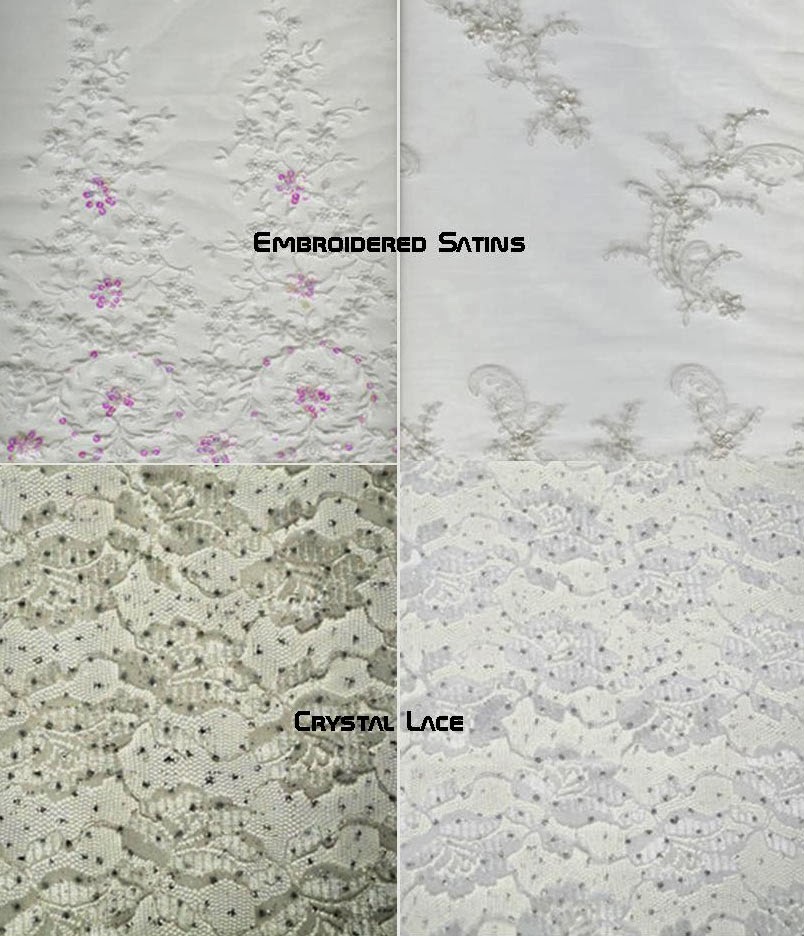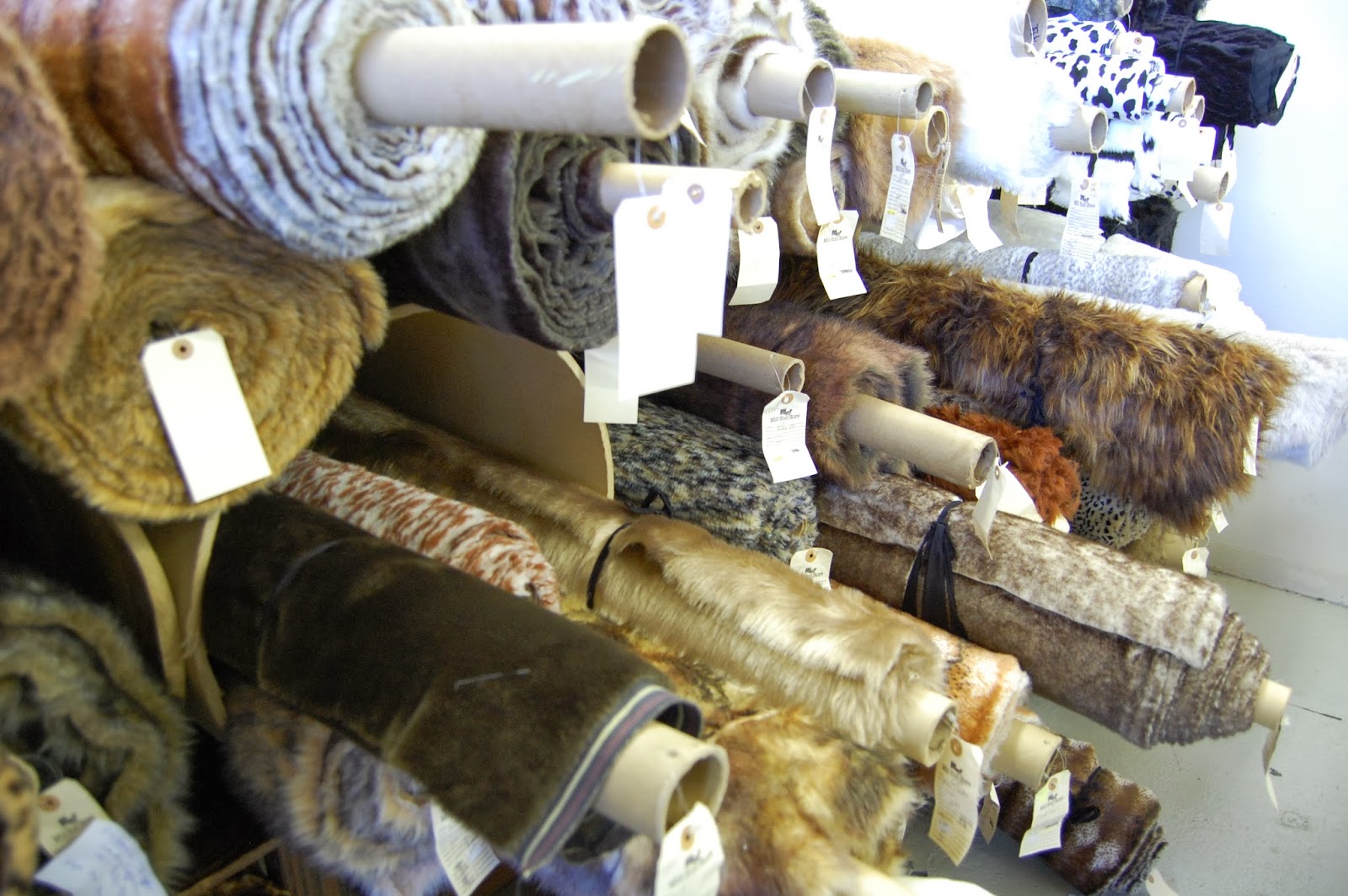There are many choices when it comes to purchasing fabric
for a project. I have put together a little ‘Fabric Shopping Guide’ for myself that
I find helpful when hunting for the perfect materials for a project but it may help you as well. Taking the time to find the correct materials however can bring
about success or failure when it comes to creating a specific item. In short,
not all fabric shops are the same and neither are the types of fabrics used for
different projects. Hunting for the perfect fabric can take a bit of time. Some
of us prefer to go to one shop for all of the materials at once. I happen to wait weeks
and even months sometimes for fabrics to arrive and patterns to be read
endlessly before a project is started.
Today I find a wide range in options in the way of
materials that makes it a very exciting time to be designing and creating items.
Sewing anything comes down to the combining of three things; the item you want
to make, the materials you have to work with, and the time and precision you put into the project. The final detail would be the tools used for
the project, and certainly valid as we all know the right tools for the job can
only help. In regards to the sewing machine used, I like to show you in most
cases how to make items with a regular sewing machine. If you are using a
serger you know the differences. If not then I’ve got you covered. Most of us
have these regular sewing machines at our disposal as opposed to professional
machinery.
In most cases we look at a pattern and what we see
is what we want. We might see that pretty pink dress in our mind as any color but pink, but we have a sense
of idealism when setting about recreating the item shown on the pattern or in
the magazine in the appropriate fabric. For men and children that is usually
cottons. For women and in some cases children as well, we use more knits, more
blended techniques to make the fashion fabrics. So here is a quick fabric guide
for all of you so when I refer to a particular fabric type, you might have a
better chance of knowing what I mean. I have also included the shops I usually
pick my materials from as I even need a bit of direction sometimes.
Cotton
Fabrics:
Cotton fabric
in different weights from very light weight (used for anything from
boxers to hankerchiefs. Nightwear for women, the lining of coats), medium
weight (works well for men’s shirts, children’s clothing, home things such
as kitchen accessories, curtains, pillow covers, muslin fabric, etc.), and then
the heavier cottons (great for coats, men’s pants, the backing for
blankets and duvet covers, denim, canvas, duck cloth).
Shops:
Joanns, Fabric Depot, Mill End, Fabric.com (online), Beverly’s (also online)
Upholstery / Extra Heavy Weigh Cotton:
This should fall into the upholstery fabric category however there are many
upholstery fabrics that are 100% cotton. I would categorize these as an extra
heavy cotton I suppose. That would be a decent way to determine the difference
between that type of fabric and a heavy weight from the above category that
would be medium weight, similar to that of a men’s pant material or a trench
coat type fabric to give you an idea there. I would also categorize a terrycloth type
cotton used mostly for bathrobes and kitchen towels and such into this category
(great for absorbing water).
Shops:
Joanns, Mill End, Fabric.com (online)
Stretch Cotton:
There seems to be a variation from what I am looking for and what the shop
people in the shops understand when I say stretch cottons. They are always
thinking that I mean a knit, and I am thinking a cotton with a limited stretch
to it, similar to a thin stretch denim of a stretch poplin. They are made with
a weave, not a knit. They just have a blend of fibers that offer a bit of
stretch. Knits are mentioned below.
Shops:
Mill End, sometimes a nice solid or print will appear elsewhere but I have a
difficult time finding a medium weight stretch cotton that I like. I also like
to purchase this fabric in person so I can guarantee it is the right weight and
such.
Linen & blends:
Linen is a natural cotton fabric and usually is a medium weight fabric with a
moderate to slightly grain running through the fabric. A linen blend is a
fabric that looks and feels similar to a linen fabric however just as indicated
in the name, the fabric has been blended with another fabric type to soften land
in many cases lighten up a fabric. I usually explain to my customers that the
real difference is that a lien blend will give you a little bit softer, lighter
fabric to work with and also cuts down on the wrinkling that a linen fabric
will, especially when worn. So some people like the all natural fiber, and
others would rather a more wearable fabric for all day with less wrinkles. I
find my customers like the linen blends more for skirts in the summer months if
that helps.
Shops:
Joanns, Mill End
Flannel:
This is a cotton fabric that has a medium weight and a soft top side. They come
in solids and prints and they are great for baby items such as crib sheets or
the backing of blankets. I do not use a lot of flannels as they have a tendency
to pill but for baby items they are more accepted because the weight and
softness is ideal, and the shops offer a wide range of prints. When I was
younger my mother used to make us flannel pajamas. You may find a fabric is
marked not suitable for children’s clothing and you should always check what
the fabric says. The warning is usually in response to fire safety precautions.
The best way to determine if the fabric you are thinking of purchasing is
suitable for the project is to ask one of the people at the shops or read the fine
print on the bolt.
Shops:
Joanns, Fabric Depot, Mill End
Fashion
Fabrics: This category is mostly going to be for women’s and
children’s clothing. They range as specialty fabrics and the materials used can
in some cases have all cotton, some cotton, or no cotton such as a rayon or
polyester.
Shops:
Joanns, Fabric Depot, Mill End, Fabric.com (online), Beverly’s (also online)
Knits:
Most people do not really think about it but the concept of a knit fabric is
specifically that, knitted in the way it has been constructed as opposed to
other types of fabrics such as cottons that are usually woven. Knits offer a
bit of a stretch to fabrics as opposed to a taught weave. With this in mind,
many items that are sewn can be used with knit fabrics such as tops, pants, dresses.
A few items that you would most likely not want to go with for a knit fabric
would be bags because they just won’t hold the items inside with a decent
amount of structure. Knits range and today you can find knits that are like
sweater fabrics to thinner stretch knits for items such as leggings or swim and
dance wear. Women’s clothing and children as well usually are made from a range
of knit styles. Some have prints, some are only one color. There are many
choices and weights from which to choose. I also find jersey fabric works
really nicely for crib sheets as well. It washes well and is soft for the
munchkins. The material content for these types of fabrics ranges and you can
also find a lot of organic fibers in the shops these days.
Shops:
Joanns, Mill End, Fabric.com (online), ebay
Evening
and Formal Fabrics: These are satins, silks, chiffons, velvets
and velours, brocades, laces, etc. and they are usually reserved for ladies and
girls clothing and for more formal events such as holidays, weddings and all
things dress up! If you were interested in making or having me make you a dress
these would be the fabrics you would most likely be interested in unless it is
a more casual day dress or skirt. You will also find men’s suit linings, silk
vests and ties will also in many cases be made from fabrics that fall into this
category.
Shops:
Joanns, Mill End, Fabric Depot, ebay and NY warehouse
Faux
Fur:
These are man-made materials and the color and texture vary.
Shops:
Joanns, Mill End, Fabric Depot. (Joanns has some select colors and textures and
fur lengths. Mill End has the largest selection I have even found and though
the prices are higher, the selection is about 80% more in quantity and the
range in colors, textures and fur thickness to be excellent. Faux fur for
costumes is usually made from fabric selected from Mill End-2 locations are
available locally to me.
Felt:
Not recommended for clothing. The fabric is made by pressing the fibers
together which makes it great for felting, additional craft projects and in
some cases costumes however as the fibers are pressed instead of woven or
knitted together, washing proves they will get knotty and begin to weaken and
or warp.
Shops:
Joanns, Mill End for heavier weight if not found at Joanns has a range in
colors and thicknesses but Mill End has more specialized colors.
Cuddle/
Fleece/ Heavy Weight fabrics: These fabrics range in
weight and thickness, softness, etc. These are great for blankets, parkas and
outerwear, bathrobes and towels, pet beds, and perhaps even pajamas.
Shops:
Joanns, Fabric Depot, Mill End, ebay
Wool
and blends: Wool is made in a number of different
weights and is really an excellent material. It is similar to cotton in that it
is a natural material, and it comes from the harvesting of wool from sheep. It
is an excellent insulator fabric and can be used in anything from scarves to
bedding. In the past people used wool for bedding as it retains the heat while
sleeping and therefore also was used for underclothes in colder climates. Wool
will shrink when heat is applied so when chocking the fabric make sure you make
a note to yourself that it should be laundered with no heat so as not to
shrink. I would also like to note that as we search for fabrics, we have a
responsibility as consumers to be responsible when shopping. Please make sure
your wool materials come from humane sources. Some of the places that sell
these materials are not very humane in the way they treat the sheep and I do
not care for that. You can find updated information online on the locations and types of wool known for inhumane practices. *I know you might this this is not important but it is-Love the animals!
Shops:
Fabric Depot, Mill End, ebay
The fabric image above shows a variety of wool knit blends.
Additional fabric info found here ->
That’s all for now. I’m off to work on a few projects. Until I return have a fabulous
day and if you have any questions feel free to let me know!
Lindsay J























































